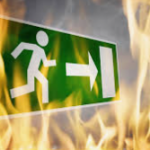Swedish massage is a widely popular technique for centuries to help people relax and alleviate stress. It involves long, smooth strokes, kneading, and circular movements on the topmost layer of muscles. This article will serve as a comprehensive guide to Swedish massage, exploring its history, benefits, techniques, and the best ways to prepare for and receive a Swedish massage. We suggest visiting laser hair removal in Manhattan.
What is Swedish Massage?
Swedish massage is a type of massage therapy that uses long, flowing strokes, kneading, and circular movements on the topmost layer of muscles. It is often called a classic massage because it is the most commonly offered and best-known type of massage in the Western world. The main goal of Swedish massage is to relax the entire body and provide therapeutic benefits, including increased circulation, reduced muscle tension, and improved flexibility.
History of Swedish Massage
Swedish massage was developed in the early 19th century by a Swedish physiologist named Per Henrik Ling. He was known for his work with gymnastics and physical education, and he believed that massage could effectively improve health and wellness. Ling created a system of movements and techniques that became the basis for a Swedish massage. It was later brought to the United States in the 1850s by two doctors who studied with Ling and began offering it to their patients. Visit the wax centers in midtown Manhattan to get the best care for waxing.
Benefits of Swedish Massage
Swedish massage has numerous benefits for both the body and mind. It can help to:
- Relieve stress and anxiety
- Reduce muscle tension and stiffness
- Increase circulation
- Improve flexibility and range of motion
- Boost immune function
- Promote relaxation and better sleep
Techniques Used in Swedish Massage
Swedish massage uses several techniques to promote relaxation and therapeutic benefits. These include:
Effleurage
Effleurage is a technique that involves long, sweeping strokes with the hands and fingers. It is used to warm up the muscles and prepare them for a deeper massage.
Petrissage
Petrissage involves kneading, squeezing, and rolling the muscles with the hands and fingers. It helps to release tension and improve circulation.
Friction
Friction involves applying pressure with the fingers or palm to a specific area. It is used to release tension and promote healing in a specific muscle or area of the body.
Tapotement
Tapotement involves rhythmic tapping or percussion movements with the hands or fingers. It is used to stimulate the muscles and increase circulation.
Vibration
Vibration involves shaking or vibrating a specific muscle or area of the body. It helps to release tension and promote relaxation.
Preparing for a Swedish Massage
To make the most of your Swedish massage experience, it is essential to prepare beforehand. Here are some tips to help you prepare for your massage:
Choosing a Therapist
Make sure to choose a licensed massage therapist with experience in Swedish massage. Look for recommendations from friends, family, or healthcare professionals.
Communicating Your Needs
Let your therapist know if you have any medical conditions or areas of your body that need special attention. Communication is key to a successful massage experience.
Eating and Drinking Before Your Massage
Avoid eating a heavy meal or drinking alcohol before your massage. Instead, drink plenty of water to stay hydrated and energized.
Dressing for Your Massage
Wear comfortable, loose-fitting clothing that can be easily removed. You will be asked to undress to your comfort level before getting on the massage table.
Receiving a Swedish Massage
Once you are prepared, it’s time to enjoy your Swedish massage. Here’s what to expect during your massage:
Entering the Massage Room
Your therapist will show you to a private room where you can undress and lie down on the massage table. The room will be quiet and dimly lit to promote relaxation.
Discussing Your Needs with the Therapist
Your therapist will ask you about your medical history, any areas of pain or tension, and your preferences for the massage.
Getting on the Massage Table
Your therapist will leave the room while you undress and get comfortable on the massage table. You will always be covered with a sheet or towel, with only the massaged area exposed.
Relaxing During the Massage
Your therapist will use various techniques to help you relax and enjoy the massage. Don’t be afraid to speak up if you need more or less pressure or discomfort.
Giving Feedback to the Therapist
After the massage, your therapist will ask for feedback to help improve future sessions. Let them know how you feel and if you have any questions or concerns.
After Your Swedish Massage
After your massage, taking care of yourself is important to continue reaping the benefits. Here are some tips:
Drinking Water
Drink plenty of water to flush out toxins and stay hydrated after the massage.
Taking a Bath or Shower
A warm bath or shower can help relax your muscles and further promote relaxation.
Resting and Relaxing
Take some time to rest and relax after the massage. Avoid strenuous activity for a few hours to allow your body to relax fully.
Continuing Self-Care at Home
Incorporate self-care practices like stretching, meditation, and deep breathing into your daily routine to promote relaxation and well-being.
Conclusion
Swedish massage is a safe and effective way to promote relaxation and alleviate stress. By understanding the history, benefits, and techniques of Swedish massage, you can make the most of your massage experience. Remember to communicate your needs and preferences to your therapist, and take care of yourself before and after the massage to continue promoting relaxation and well-being.
So, if you’re looking to unwind and relax, Swedish massage is a great option. With this ultimate guide, you have all the information you need to make the most of your Swedish massage experience. Finally, we recommended Waxing studio Manhattan and the Best facial for acne in Manhattan to know more details.




Average Rating